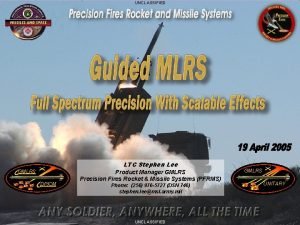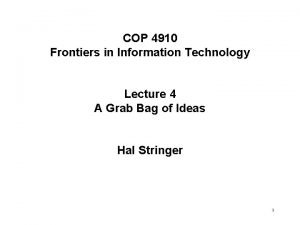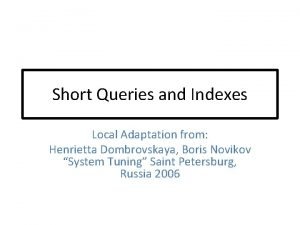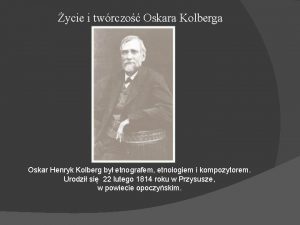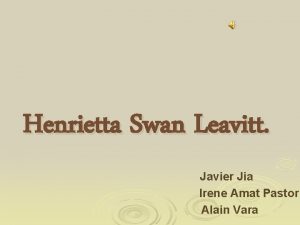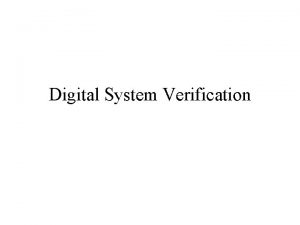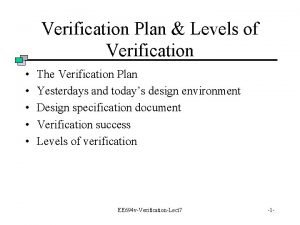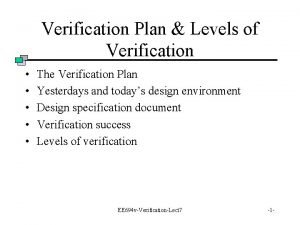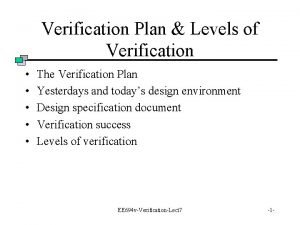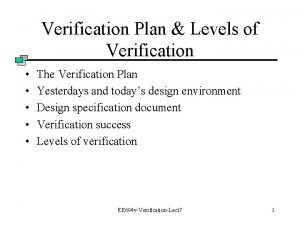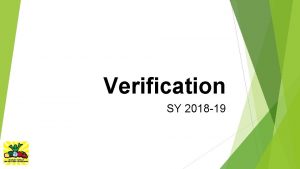The Frontiers of Technology in Warhead Verification Henrietta








- Slides: 8

The Frontiers of Technology in Warhead Verification Henrietta Toivanen Project on Nuclear Issues Capstone Conference 2016 Center for Strategic and International Studies

Outline 1. Introduction 2. Past Disarmament Verification 3. Future Verification Demands 4. Physical Cryptography & Zero-Knowledge Verification 5. Implications for Future Multilateral Disarmament

Introduction • Fundamental challenge in disarmament verification – confidentiality versus transparency? • State concerns • Article I of the NPT • Future needs for verification • Lower number of warheads • New categories of warheads under limitations • Reduced reliance on national technical means • Other nuclear weapons states involved as well Ø Warhead-focused verification

Past Disarmament Verification • Warheads not the treaty-accountable item, rather their delivery vehicles and launchers • Each delivery vehicle has a specified number of attributed warheads • Negative verification to ensure the overall maximum not exceeded • Past disarmament efforts • Earliest treaties relied on national technical means (NTM) • Radiographic measurements have been allowed, but only to certify non-nuclear nature • Unique characteristics of U. S. -Soviet context Ø Multilateral disarmament will create novel challenges

Future Verification Demands • Core technical challenge – high-security authentication of warheads • Host state – Confidentiality • Verifying party – Authenticity and transparency • Status quo • • • Information barriers in the context of an attribute verification system Trilateral Initiative 1996 – 2002 U. K. studies 2000 – 2005 U. S. -U. K. collaboration since 2000 U. K. -Norway Initiative since 2007 IPNDV since 2014 Ø System authentication and certification remain as significant challenges

Physical Cryptography & Zero-Knowledge Verification • A novel approach developed over the past years • Concept of zero-knowledge proofs • Physical cryptographic methods under a template verification system • Inherently protects the sensitive and classified information in warheads • Inspector delayed choice and interaction with the system • Information barriers could still be applicable as a back-stopper • First proof of concept published in 2014 Ø Current research explores different technological options

Physical Cryptography & Zero-Knowledge Verification • Current research explores different technological options • Non-electronic detectors based on super-headed emulsions and fast neutron differential radiography (Princeton University, Nuclear Futures Laboratory) • Single-pixel radiography using high-energy X-ray beams in combination with scattering foils (MIT, Laboratory for Nuclear Security and Policy) • Two-dimensional time-encoded imaging system using high resolution fast neutrons (Sandia National Laboratories) • Core unsolved challenges • How to verify the authenticity of the reference warhead? • The risk of information leakage in negative measurement outcomes? • What is the best physical measurement approach?

Implications for Future Multilateral Disarmament • Significant technical asset for arms control treaty architecture • Critical for addressing smaller number of warheads and involving different nuclear weapons states • Ability to track warheads and re-authenticate them in the dismantlement process • Essential political asset for disarmament negotiators • Building trust in the disarmament process and gaining support for the efforts within domestic constituencies • Solve political obstacles encountered in past disarmament negotiations Ø Even if never fully implemented, shapes the dynamics of negotiations over verification
